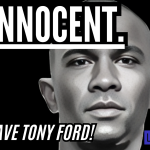From April 19, 2011, “Mike Warnke & marriage equality“:
Mike Warnke was a con artist. He traveled the country for years, packing the pews of evangelical churches with his message of salvation from Satan, selling thousands of books and records while hauling in millions in donations for the children he had supposedly rescued from the clutches of Satan-worshipping abusers.
Warnke arrived in churches like Harold Hill from The Music Man — as charming and charismatically beguiling as any con artist could be. “You’ve got trouble right here in River City,” he sang. “With a capital T that rhymes with B that stands for Beelzebub!” And he’d gradually segue from lighthearted jokes, mostly at his own expense, into gruesome tales of his dark past as a satanic high priest — stories of drug-fueled orgies and grisly rituals of bloodletting, torture and human sacrifice.
And none of it was true.
Warnke’s lies eventually unraveled. His unbelievable stories — for which he never produced a shred of evidence — proved to be chronologically impossible and were refuted by dozens of eyewitnesses who knew him throughout the time he was supposedly a satanic high priest with six-inch fingernails. The supposed “satanic church” to which he claimed to belong never existed. Nor did the children he was raising all that money to rescue. He was, quite simply, a fraud — a huckster whose lies convinced millions to buy his books and to hand over their money to help him combat an evil menace that never existed.
I’ve written about Mike Warnke before, and about the scrupulous yeoman’s work performed by journalists Mike Hertenstein and Jon Trott of Cornerstone magazine, who exposed his fraud, first in a detailed, 20,000-word article and then, even more expansively, in their excellent book Selling Satan: The Evangelical Media and the Mike Warnke Scandal. Their careful, painstaking work brought Warnke’s long-running con game to an end. …
Hertenstein and Trott marshal their evidence to prove beyond any reasonable doubt that Warnke was selling a lie and no reader could ask for a more comprehensive account of the supply side of that story.
But a similar account of the demand side still waits to be written. What was it about the lie that Mike Warnke was selling that made so many hundreds of thousands of evangelicals so desperate to buy it? If “Selling Satan” was a scandal, isn’t Buying Satan an even more scandalous, more disturbing phenomenon? What was the attraction? What made Warnke’s horrifying, lurid tales something that his eager audience wanted to be true?
Thanks to the valiant work of Hertenstein and Trott, Mike Warnke has gone away (mostly).
But that huge eager audience he tapped into is still there. The fascination or temptation or corruption that made so many evangelicals so enthusiastically gullible, so willing and eager to believe stories of imaginary monsters, is just as pervasive and popular as it was in Warnke’s heyday.
That demand-side aspect of the story is a much stranger phenomenon than the supply-side con game Mike Warnke was running. It’s not hard to understand what he was after or what he gained from selling his lies. He got rich and famous and lived the life of a rock star.
But what did his audience gain? What were they chasing after in choosing to believe his unbelievable and implausible tales? …















